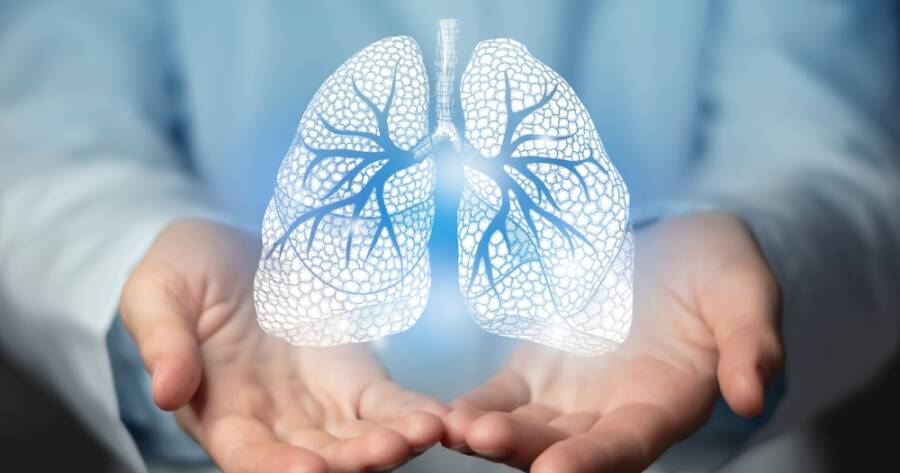Bronchiectasis is a chronic lung condition that can lead to persistent coughing, shortness of breath, and infections. Understanding the latest treatments and management strategies could help improve quality of life for those affected.
What Is Bronchiectasis?
Bronchiectasis is a chronic lung condition characterized by the permanent widening of the airways, or bronchi, in the lungs. This widening leads to the buildup of mucus, which can cause frequent lung infections and inflammation. Over time, the inflammation and infections can damage the lung tissues, making it harder for the airways to clear mucus effectively.
People with bronchiectasis often experience persistent coughing, difficulty breathing, and frequent respiratory infections. The condition can develop at any age and can worsen without proper treatment. Though there is no cure for bronchiectasis, treatments are available to manage symptoms, prevent further lung damage, and improve quality of life.
These treatments often include medications to reduce inflammation and infection, airway clearance techniques, and, in severe cases, surgery. Understanding bronchiectasis and how it affects the lungs is key to managing the condition and preventing complications over time.
Bronchiectasis Is Often Caused by Other Conditions
Bronchiectasis is frequently the result of other underlying conditions that compromise lung function or the body’s ability to clear infections. Chronic respiratory infections, such as pneumonia or tuberculosis, can lead to bronchiectasis by damaging the bronchial walls. Additionally, genetic conditions like cystic fibrosis, which causes the production of thick, sticky mucus, are significant contributors to bronchiectasis development.
Immune system disorders, such as primary immunodeficiency, can also increase susceptibility to lung infections, which may result in bronchiectasis over time. Other potential causes include autoimmune diseases like rheumatoid arthritis and inflammatory conditions such as chronic obstructive pulmonary disease (COPD).
In some cases, the cause of bronchiectasis is unknown, known as idiopathic bronchiectasis. Understanding the underlying causes is essential for effective treatment and management. By addressing the root conditions, doctors can tailor therapies to prevent the progression of bronchiectasis and improve the patient’s overall lung health.
An Early Diagnosis Is Important
Detecting bronchiectasis early is crucial for managing the condition and preventing long-term lung damage. Early diagnosis allows for timely interventions that can slow the progression of the disease, reduce infections, and improve overall quality of life. Diagnostic tools, such as chest X-ray or high-resolution CT scans, are typically used to identify bronchiectasis by showing the extent of airway damage and mucus buildup.
Once diagnosed, patients can begin a personalized treatment plan, which may include antibiotics to treat infections, bronchodilators to open airways, and airway clearance techniques to remove mucus. Regular monitoring of lung function can also help doctors adjust treatments as needed.
The earlier bronchiectasis is identified, the more effectively it can be managed, reducing the risk of severe complications. People experiencing persistent respiratory symptoms, such as a chronic cough or frequent lung infections, should seek medical attention to ensure an accurate diagnosis and begin appropriate treatment.
Warning Signs of Bronchiectasis You Shouldn’t Ignore
Recognizing the warning signs of bronchiectasis is essential for early detection and treatment. Persistent coughing, especially with the production of large amounts of mucus, is one of the most common symptoms. Frequent respiratory infections that take longer to resolve than usual or require repeated courses of antibiotics are also red flags.
Shortness of breath, wheezing, and chest pain are additional signs that the airways may be inflamed or obstructed. Fatigue and feeling run-down, even after infections clear up, can indicate that the lungs are not functioning at full capacity.
In more severe cases, bronchiectasis may cause coughing up blood, a symptom that should never be ignored. If you experience any of these symptoms regularly, it’s important to consult a healthcare provider. Ignoring these signs can lead to further lung damage, making treatment more challenging. Early intervention can help prevent complications and improve long-term outcomes.
Learn More About Bronchiectasis
Bronchiectasis is a chronic lung condition that requires careful management to prevent further lung damage and improve quality of life. Understanding the causes, symptoms, and treatment options is crucial for early diagnosis and effective care. By recognizing warning signs such as persistent coughing, frequent infections, and shortness of breath, individuals can seek timely medical attention.
With advancements in treatment and management techniques, those with bronchiectasis can control symptoms and live healthier lives. If you or a loved one are experiencing symptoms, learning more about bronchiectasis and consulting a healthcare provider can make a significant difference in long-term health outcomes.
